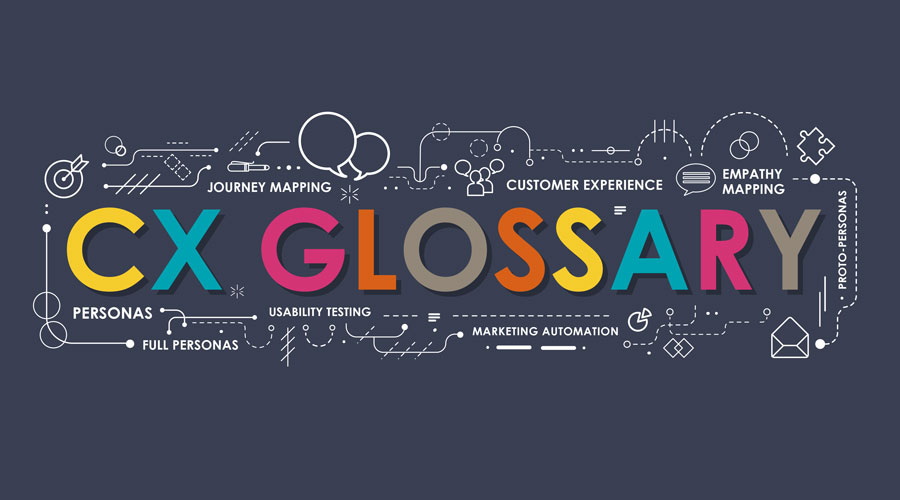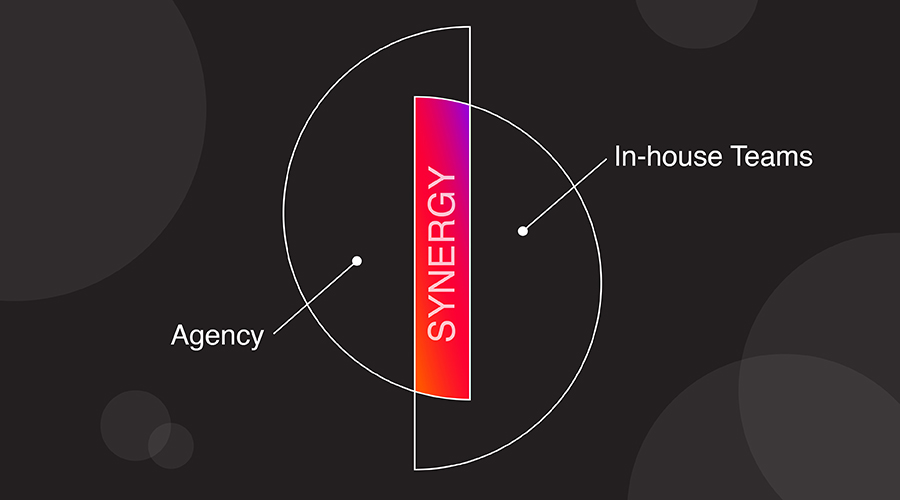Understanding the customer experience is more complex than ever before. With expanding content channels, competing advertising strategies and unprecedented technological advancement, getting to know your customers is key to delivering effective campaigns. When it comes down to it, customers want to feel “seen” by marketers, which means that their needs are understood, affirmed and anticipated. Understanding the tools to better optimize customer experience—or CX—is more important than ever. What marketers need are novel strategies to attract attention in a truly dizzying information economy. But where do you start?
The first step is gaining alignment. With the quick emergence of CX in our industry, also comes mismanaging terminology. Getting everyone on the same page and using the same terminology may seem rudimentary but can save you time and frustration in the long run. And as a CX agency, we continually add new tactics to our toolbox and love sharing insights with our readers. So how do you keep it all straight?
To help get started, we’re sharing a few basics and defining key terms to set the stage for building a successful strategic customer experience marketing approach. As a bonus, we linked a few handy resources to help put these terms into practice.
Defining Customer Experience (CX) and User Experience (UX)
Let’s start by clarifying the difference between customer experience and user experience. Customer experience is the overall perception consumers have of a brand. Broadly, it encompasses the impressions and interactions that a customer has with a brand. When marketers implement CX best practices, they take the time to get to know their customers and to understand the information ecosystems that surround them. A responsive CX strategy ensures that the information shared is timely and relevant for customers, finding a balance between logic and emotion.
While aligned with CX, user experience focuses on the actual engagement of customers as they interact with (oftentimes) digital experiences. This includes how users navigate web infrastructure, how accessible call to actions (CTAs) are within a web page and where distractions deviate users from the intended purposes. As more advertising is born digital, better UX means that customers can interact in an anticipated manner and find the information they need to move forward in the customer journey.
One way to assess this interaction is with usability testing – a method for better understanding how audiences complete tasks by observing how they interact with a site or experience. This process can help UX researchers determine how long it takes to complete typical tasks and where roadblocks present themselves so web pages can be further optimized.
Related: Where Does Good UX Come From?
Understanding Your Customers
Knowing who your current customers are is an important first step in creating a positive and engaging customer experience. Developing buyer personas can help provide a deeper understanding of what your customers are thinking and doing as they progress through the buying journey.
Personas are descriptions of customers that are based on market research and insights from existing customers. To create a persona, you need to put on your creative thinking hat and then layer on critical insights from what you already know about your customers. Developing effective personas helps move audience analysis from assumption to action. Though both proto and full personas (more on this below!) help to empathize with customers and develop consensus on understanding audiences, they require different investments and should be responsive to project needs.
In instances when there is no time or budget to complete formal consumer research, proto personas are early sketches that create a greater understanding about customers. A proto persona may zoom in on customer demographics and use these to make informed decisions about their needs, expectations and concerns. This is the best guess for who an advertisement is targeting that is often used in the short-term during the ideation stage.
Whereas proto personas are largely anecdotal, full personas provide more detail because they require a more complete understanding of audiences. Full personas are a long-term strategy that move beyond demographics to create a story about customers. This type of persona takes much more time and resources than a proto persona, but it will address blind spots and provide a more robust understanding of how customers are influenced by the marketplace, competitors and trends.
In the persona development stage, using an empathy map can be helpful for taking the time to slow down and think through your audiences in a deeper manner. An empathy map provides the space for users to analyze their audiences by defining what they think and feel, as well as their pains and gains. By documenting these details, you can move forward with more alignment on messaging and strategy. Download Simantel’s empathy map tool to learn more about bringing an empathetic start to your messaging.
In addition to understanding who the customer is and what drives them, it’s important to consider where they’re coming from and where they’re going. Customer journey mapping can help. A method for understanding what a customer needs by assessing content approaches, channel decisions and measurement, customer journey mapping is key to keeping marketing materials relevant. Use this handy Customer Journey Map tool to ensure your marketing messages take into account your customers’ needs at each touchpoint of the buyer’s journey.
Building Customer Relationships
A discipline that puts many of these concepts into practice is marketing automation, an approach that helps brands build relationships with customers by customizing their experiences. This can mean addressing the customer by name and building a brand-based connection, or through serving customers optimized content related to their past purchases or relevant industry. Good marketing automation meets the right customer at the right time with the right message. But how do you do that? (Hint: see above!)
Need a little help getting your customer experience research and journey mapping squared away to set your marketing automation efforts up for success? Reach out. We’d love to roll up our sleeves and dig in to uncover must-have insights.





